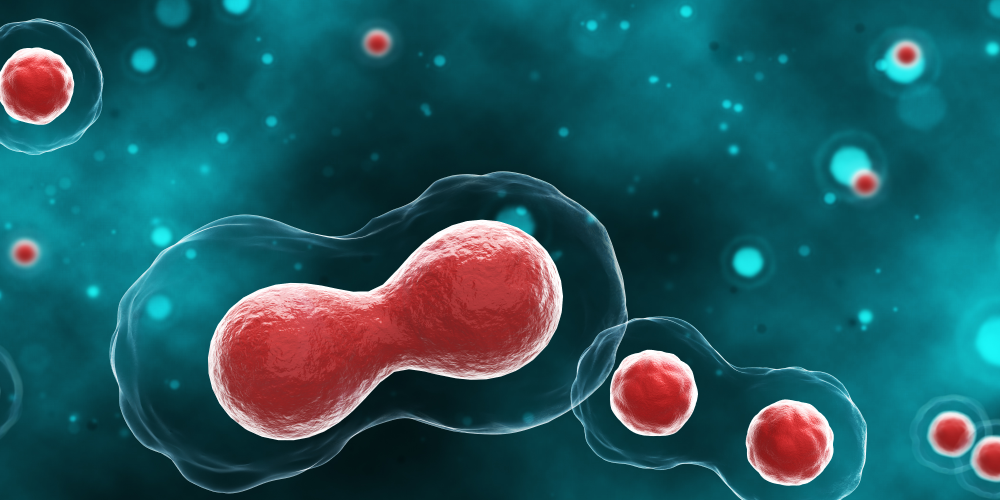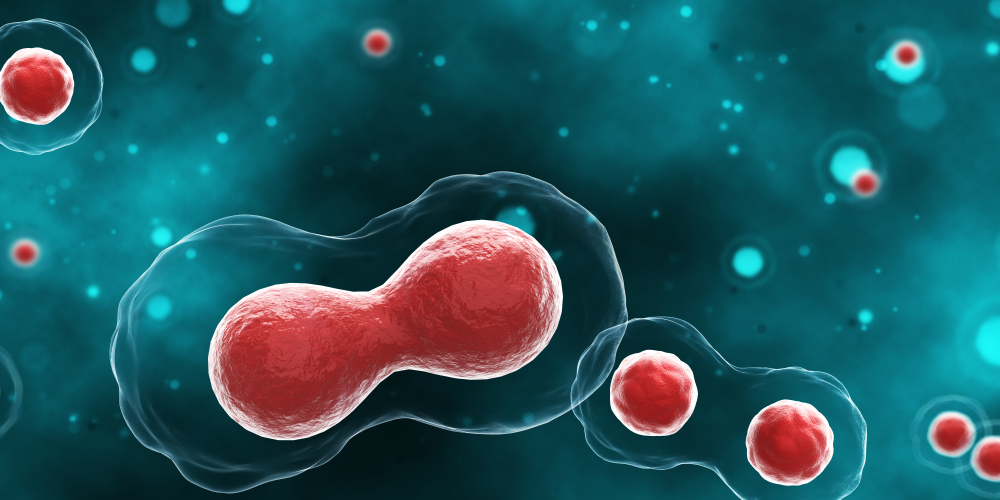The Past Life of a Protein
Petra Schwille is on the hunt for biology’s “hydrogen atom,” the simplest life element whose behaviors and properties scientists can fully calculate. The quest has led Schwille to delve into the mysterious world of proteins where she and her group at the Max Planck Institute of Biochemistry, Germany, have uncovered some never-before-seen protein behaviors. There is no indication that these behaviors perform a function in today’s cells, but they could reveal roles of the protein in earlier lifeforms and, in doing so, potentially allow scientists to solve the enigma of life’s beginning. Schwille discussed her group’s work at the recent Annual Meeting of the Biophysical Society.
Proteins are the functional elements of life, controlling everything from DNA replication to metabolic reactions to the transport of molecules from one part of a cell to another. Without these functions, life as we know it would not exist, which is why, Schwille says, she has spent the last decade or so trying to unlock the hidden behaviors of these molecules. “I’m really very intrigued by what proteins can do. I think if we can understand their functions and how those functions emerge, then there is the very real possibility of understanding life’s secrets.”
The proteins currently at the center of Schwille’s attention have the catchy names “MinD” and “MinE,” pronounced as “mindy” and “minny.” Found in E. coli bacteria, Min proteins drive cell division by forming patterns on the cell membrane that tell the bacteria where to split. “The Min proteins basically make sure that the middle of the cell is found so that you get two equally sized daughter cells after division,” Schwille says. Biologists also think that the proteins are involved in ensuring that each daughter cell inherits the same amount of chromosomes, but that has yet to be confirmed.
The ability for cells to divide—or procreate—is one of three essential traits that makes them alive. (The other two are the ability to metabolize and the ability to process information.) If you want to build biology’s hydrogen atom, then “understanding and replicating the cell division process is key,” Schwille says, which is exactly what she and her team have been trying to do with MinD and MinE.
In their experiments, the group starts with an idealized cell membrane that they assemble on a glass slide that is submerged in a solution. They then add to the system purified Min proteins, which they’ve doped with a fluorescent molecule, and adenosine triphosphate (ATP) molecules—the energy source for most cell processes—and watch what happens with a microscope.
Their first experiments, which they completed more than a decade ago, demonstrated that MinD and MinE self-organize on the membrane, creating wave-like patterns in the concentrations of the two proteins. These patterns extend for many hundreds of micrometers and persists for many hours. Later experiments confirmed that the pattern formation process sets the stage for where the cell divides, with a dip in Min protein concentrations occurring at the membrane’s center. “The proteins have this beautiful self-organizing ability that involves very little complexity—you need the proteins, ATP, and a membrane, and that’s it,” Schwille says.
While much of the team’s focus has been on understanding known roles of the proteins in real cells, their exploration has turned up some unanticipated functions. In one set of experiments, which involved a spherical membrane structure (known as a vesicle), Schwille and her group found that the self-organization of the Min proteins induced local concentration peaks that altered the vesicle’s surface tension and changed how its membrane curved. Depending on the peaks’ magnitudes, the vesicles either bounced up and down or opened and closed like the mouth of a fish. In another group of experiments, this time again on flat membranes, they found that MinD and MinE concentration waves can exert a sweeping force on other proteins sitting on the membrane.
But these behaviors only happen in their idealized systems—they have never been seen in real cells. This environmental sensitivity could shake a core belief in biology that each protein has a very clear role, and that it will behave the same way in any organism, Schwille says. “That is clearly not the case.” Rather, her group’s experiments indicate that a protein can have one function in one organism and a completely different function in another.
“I very much like the idea of ‘moonlighting’ proteins, where a protein exhibits more than one physiologically relevant biochemical or biophysical function,” says Allen Liu, a biophysicist at the University of Michigan. Liu was not involved in this project but is familiar with Schwille’s work, as he spent his sabbatical year visiting her lab. He finds it especially intriguing that the moonlighting proteins in this case involve cell division, “as cellular shape changes underlie many essential cellular processes.”
Observing these hidden behaviors could help in the search for the origin of life, Schwille says. The Min proteins might not have their sweeping role, for example, in current organisms, but that does not mean that they didn’t perform this function in earlier organisms, she says. “It’s very unlikely that these functions, these very obvious functions, have never been used by any cell.”
Ricard Solé, a biophysicist at the Pompeu Fabra University, Spain, finds this evolutionary aspect of the work interesting. Inducing curvature changes in a cell’s membrane is key for cell division, but it remains unknown how early cells evolved the mechanisms for reliable self-replication, he says. These results could help “unravel” that problem.
–Katherine Wright
Katherine Wright is the Deputy Editor of Physics Magazine.





